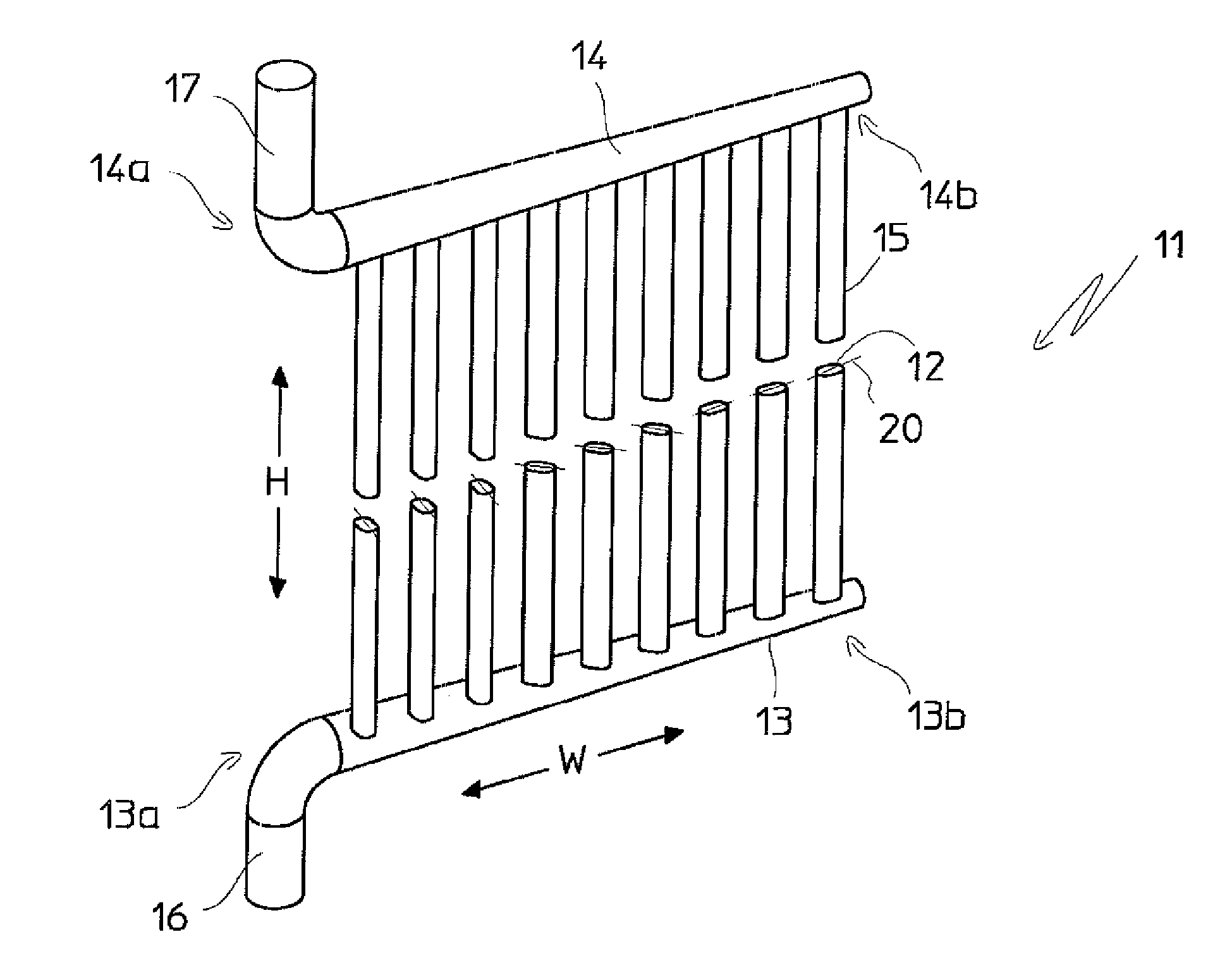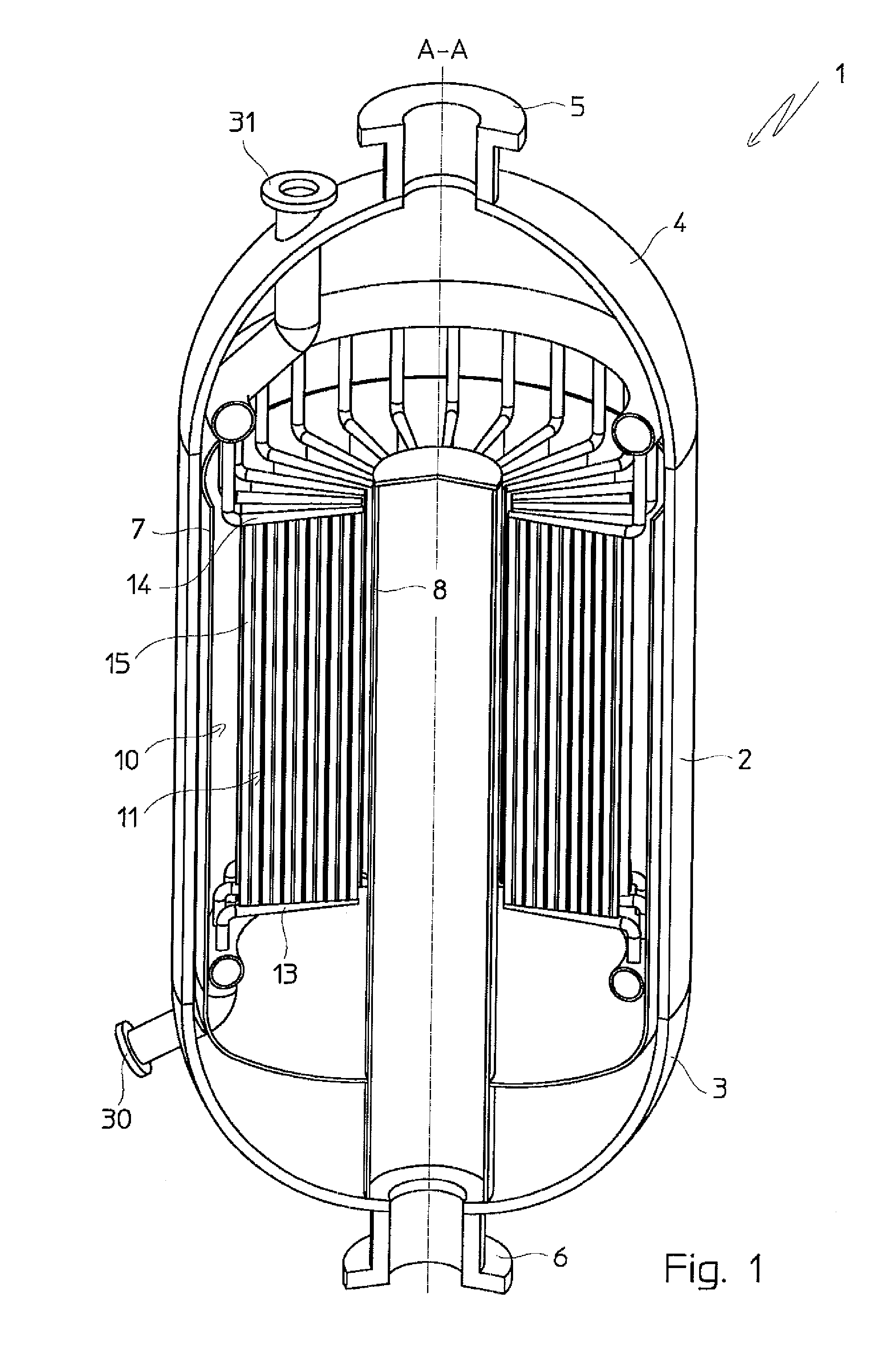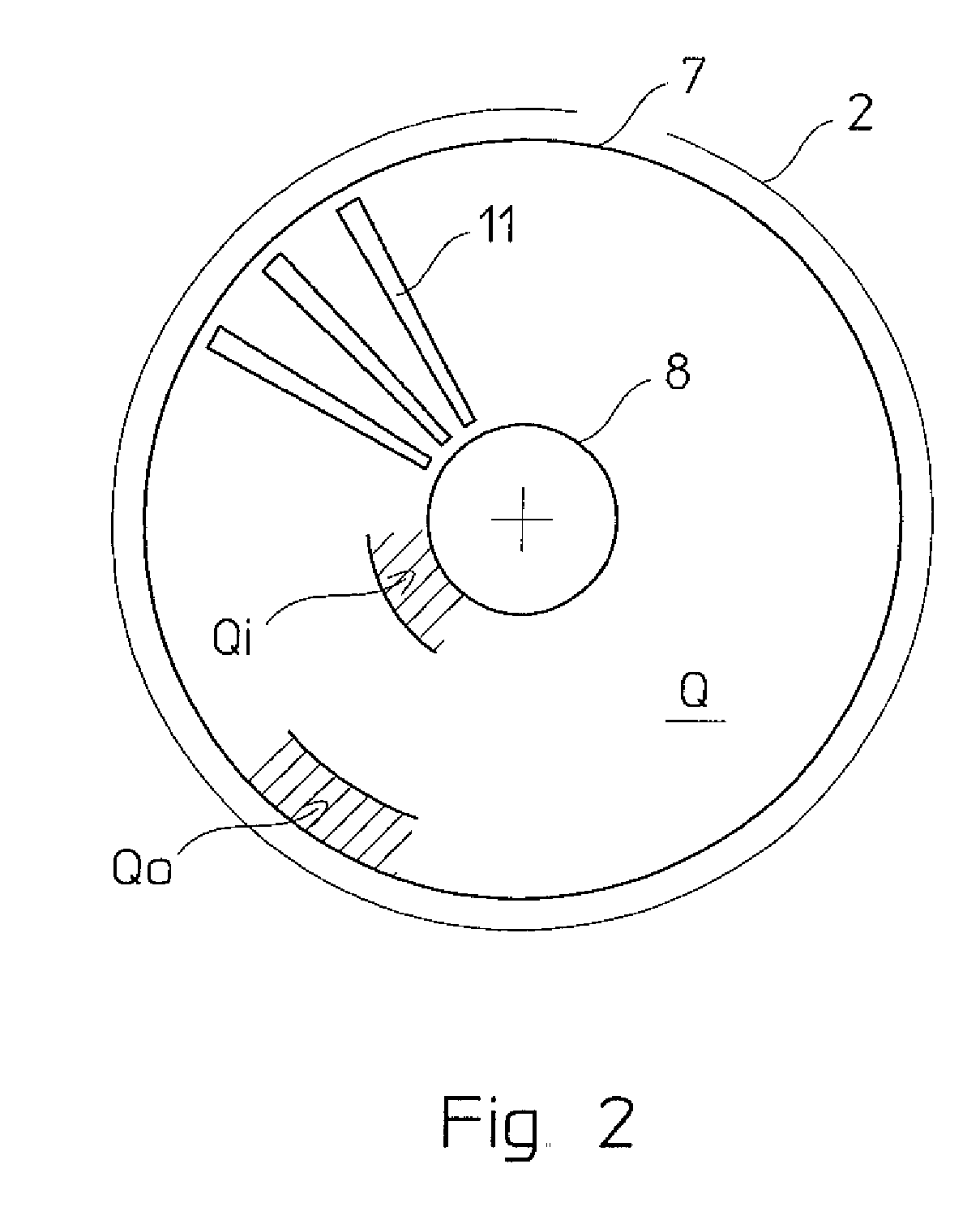Heat exchanger with radially arranged elements for isothermal chemical reactors
a technology of isothermal chemical reactors and heat exchangers, which is applied in the field of new heat exchangers, can solve the problems of large flanges, increased welding costs, and inability to substitute or extract heat exchanger parts for maintenance, and achieves the effect of less welding and low cos
- Summary
- Abstract
- Description
- Claims
- Application Information
AI Technical Summary
Benefits of technology
Problems solved by technology
Method used
Image
Examples
Embodiment Construction
[0045]With reference to FIG. 1, an isothermal chemical reactor 1 comprises a cylindrical shell 2, with vertical axis A-A, a lower end 3 and an upper end 4, respectively equipped with an inlet flange 5 for the fresh charge of reagents and an outlet flange 6 for the products of the chemical reaction.
[0046]The example of FIG. 1 refers to a catalytic reactor, for example a methanol converter for the synthesis of methanol.
[0047]The reactor 1 contains an annular catalytic rack, which is per se known and not described in detail, containing an appropriate catalyst and externally delimited by a cylindrical perforated wall 7. The fresh charge of reagents enters from an interspace, between said wall 7 and the shell 2, flowing in a radial direction through the catalytic rack; the products of the reaction are collected in a central duct 8 in communication with the outlet flange 6.
[0048]The reaction takes place in the annular reaction space Q defined by the catalytic rack, between the wall 7 and ...
PUM
 Login to View More
Login to View More Abstract
Description
Claims
Application Information
 Login to View More
Login to View More - R&D
- Intellectual Property
- Life Sciences
- Materials
- Tech Scout
- Unparalleled Data Quality
- Higher Quality Content
- 60% Fewer Hallucinations
Browse by: Latest US Patents, China's latest patents, Technical Efficacy Thesaurus, Application Domain, Technology Topic, Popular Technical Reports.
© 2025 PatSnap. All rights reserved.Legal|Privacy policy|Modern Slavery Act Transparency Statement|Sitemap|About US| Contact US: help@patsnap.com



